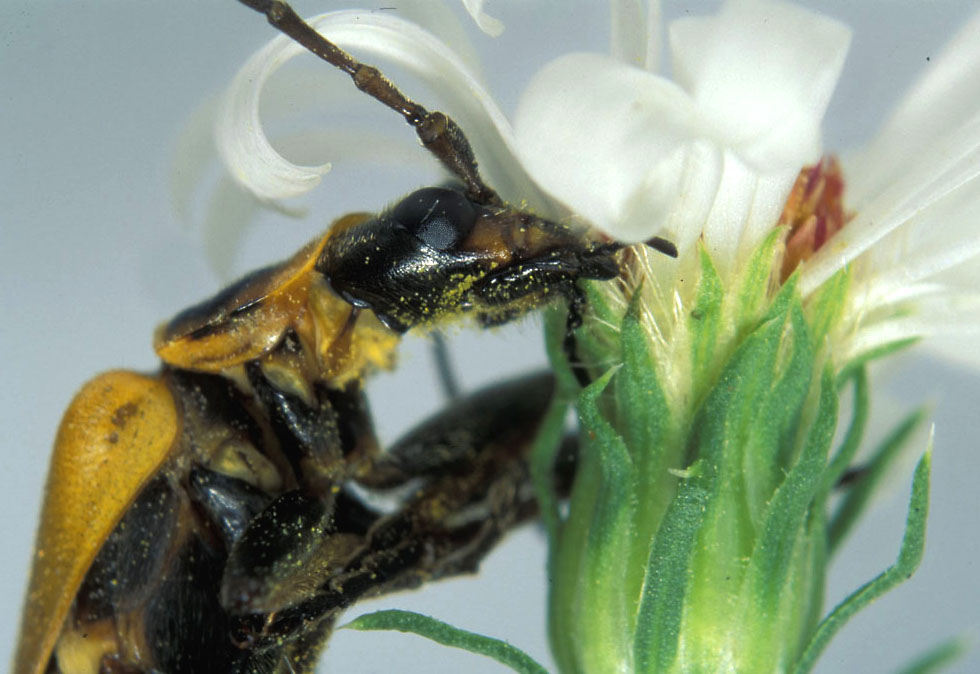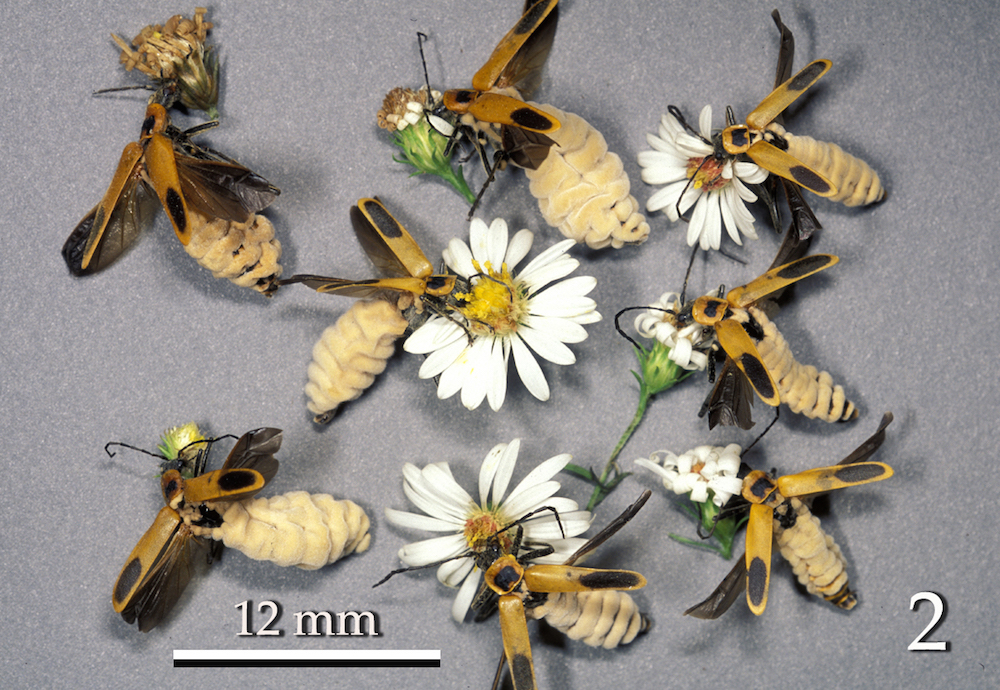Insect Walking Dead: How a Fungus Turns Beetles into Killer Zombies

A fungus worthy of its own horror film is on the loose, taking over the bodies of goldenrod soldier beetles and turning them into contagious zombies that can infect their beetle brethren, a new study finds.
The fungus has a creepy but foolproof modus operandi: About two weeks after it infects the goldenrod soldier beetle (Chauliognathus pensylvanicus), it orders the beetle to climb up a plant and clamp its mandibles around a flower.
Then, the beetle dies, swinging like a scarecrow from the flower and giving the fungus ample opportunity to infect nearby beetles, said study lead investigator Donald Steinkraus, a professor of entomology at the University of Arkansas. [See Photos of the Zombie Beetles Hanging from Flowers]
Steinkraus first spotted these bizarre, zombie-like beetles on a research farm in Fayetteville, Arkansas. He remembers seeing hundreds of yellow-and-black soldier beetles on a patch of blooming wild asters. The beetles were eating pollen and mating — "the flowers were sort of like a dating site that also offered food," Steinkraus told Live Science in an email.
But the bucolic scene took a startling turn when Steinkraus took a closer look.
"On the flowers, I noticed that many beetles were dead, hanging onto the flowers just by their mandibles," Steinkraus said. "Their wings [were] dramatically opened and their abdomens [were] distended with what I recognized as an insect pathogenic fungus."

Zombie beetle
Adult C. pensylvanicus may look like wasps or bees, but they're actually harmless beetles and key pollinators that have a life span of a year, Steinkraus said. Their larvae are voracious, eating other insects and possibly even ticks, he added.
Sign up for the Live Science daily newsletter now
Get the world’s most fascinating discoveries delivered straight to your inbox.
When Steinkraus realized that a fungus (Eryniopsis lampyridarum) was turning these "pretty" beetles into zombies, he gathered close to 500 living and dead specimens to study them, he said.
His experiments revealed that a beetle can get infected when fungal spores from a dead beetle attach to its body. There, the spores germinate and break through the beetle's exoskeleton and begin growing inside its body. Later, the fungus directs the beetle to climb up the plant and clamp down on it before dying on "the same flowers that healthy beetles are visiting to eat pollen and mate," Steinkraus said. He added that although it's not clear how the fungus directs the zombie beetles, it likely involves chemical signals.
"It hangs there all day, and the following night, at about 2 a.m., the fungus begins to grow out of the dead beetle's abdomen," he said. "At this time, the dead beetle opens its closed wings, expanding them as if in flight. This exposes the fungal spores and may also serve as an attractant for living healthy beetles."
It's "spooky" that the fungus can make the dead beetle open its wings, Steinkraus said.
"I compare this to human zombies — dead bodies that can move," he said. "It would be like a dead human suddenly standing up and opening its arms."

There is no way to protect the beetles from the fungus, which can kill up to 20 percent of a population of soldier beetles every year, Steinkraus said. But, though unnerving, the fungus isn't that unique, he said.
"Microorganisms that cause disease in animals evolve strategies to maximize their chances of surviving by infecting more hosts," Steinkraus said. "Similar things occur even in humans, where a pathogenic (disease-causing) microorganism can affect the human host to aid in the pathogen's spread and survival."
The study was published in the September issue of the Journal of Invertebrate Pathology.
Original article on Live Science.

Laura is the archaeology and Life's Little Mysteries editor at Live Science. She also reports on general science, including paleontology. Her work has appeared in The New York Times, Scholastic, Popular Science and Spectrum, a site on autism research. She has won multiple awards from the Society of Professional Journalists and the Washington Newspaper Publishers Association for her reporting at a weekly newspaper near Seattle. Laura holds a bachelor's degree in English literature and psychology from Washington University in St. Louis and a master's degree in science writing from NYU.









